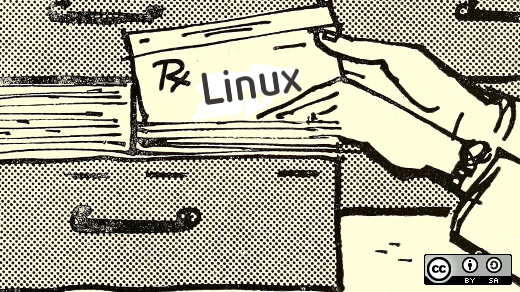Open Source Democratized Software. Now Let’s Democratize Security

Now, imagine what would happen if the world of cybersecurity were democratized
in the way that software development has been democratized by open source. It
would create a world where security would cease to be the domain of elite
security experts alone. Instead, anyone would be able to help identify the
security problems that they face, then build the solutions they need to address
them, just as software users today can envision the software platforms and
features they’d like to see, then help implement them through open source
projects. In other words, users wouldn’t need to wait on middlemen — that is,
the experts who hold the reins — to build the security solutions they needed.
They could build them themselves. That doesn’t mean that security experts would
go away. They’d still be critical, just as professional programmers working for
major corporations continue to play an important role alongside independent
programmers in open source software development. But instead of requiring small
groups of security specialists to identify all the cybersecurity risks and solve
them on their own, these tasks would be democratized and shared across
organizations as a whole.
A new language for quantum computing

Programming quantum computers requires awareness of something called
“entanglement,” a computational multiplier for qubits of sorts, which translates
to a lot of power. When two qubits are entangled, actions on one qubit can
change the value of the other, even when they are physically separated, giving
rise to Einstein’s characterization of “spooky action at a distance.” But that
potency is equal parts a source of weakness. When programming, discarding one
qubit without being mindful of its entanglement with another qubit can destroy
the data stored in the other, jeopardizing the correctness of the program.
Scientists from MIT’s Computer Science and Artificial Intelligence (CSAIL) aimed
to do some unraveling by creating their own programming language for quantum
computing called Twist. Twist can describe and verify which pieces of data are
entangled in a quantum program, through a language a classical programmer can
understand. The language uses a concept called purity, which enforces the
absence of entanglement and results in more intuitive programs, with ideally
fewer bugs.
Understanding Linus's Law for open source security

Linus's Law asserts that given enough eyeballs, all bugs are shallow, but we
don't really know how many eyeballs are "enough." However, don't underestimate
the number. Software is very often reviewed by more people than you might
imagine. The original developer or developers obviously know the code that
they've written. However, open source is often a group effort, so the longer
code is open, the more software developers end up seeing it. A developer must
review major portions of a project's code because they must learn a codebase to
write new features for it. Open source packagers also get involved with many
projects in order to make them available to a Linux distribution. Sometimes an
application can be packaged with almost no familiarity with the code, but often
a packager gets familiar with a project's code, both because they don't want to
sign off on software they don't trust and because they may have to make
modifications to get it to compile correctly. Bug reporters and triagers also
sometimes get familiar with a codebase as they try to solve anomalies ranging
from quirks to major crashes.
UN launches privacy lab pilot to unlock cross-border data sharing benefits

The lab’s first use case will see NSOs share data relating to the import and
export of certain commodities recorded between their own country and all other
countries in the group. From here, each pair of countries will use PETs to
discreetly check whether the amount of their bilateral trade corresponds or not.
The learning exercise will use pre-approved, publicly available data, and will
aim to ‘iron out’ any technical, security, or bureaucratic challenges. “Senior
leaders are now talking about Privacy Enhancing Technologies to enable
cross-border and cross-sector collaboration to solve shared challenges,” said
Stefan Schweinfest, director of the UN Statistics Division. “At the same time,
PETs will protect shared values such as privacy, accountability, and
transparency. This is an important moment for PETs to help improve official
statistics, and support democratic societies, honouring citizens’ entitlement to
trusted public information.” Dr Jack Fitzsimons, founder of Oblivious,
commented: When you send data to a server, there is well-established technology
to make sure it lands at the right place.
Surge in Malicious QR Codes Sparks FBI Alert

Menus, event ticket sales, quick site access — QR codes have become a common way
to interact as a result of the COVID-19 pandemic. But the smart little matrix
bar codes are easily tampered with and can be used to direct victims to
malicious sites, the FBI warned in an alert. QR codes are the square, scannable
codes familiar from applications like touchless menus at restaurants, and have
gained in popularity over the pandemic as contactless interactions have become
the norm. Simply navigating a smartphone camera over the image allows the
device’s QR translator – built into most mobile phones – to “read” the code and
open a corresponding website. “A victim scans what they think to be a legitimate
code, but the tampered code directs victims to a malicious site, which prompts
them to enter login and financial information,” the FBI alert explained. “Access
to this victim information gives the cybercriminal the ability to potentially
steal funds through victim accounts.”
Palo Alto Networks and IBM Are Automating 5G Security for Business Growth
The evolution of mobile networks has long focused on moving faster, and moving
toward more distributed and abstracted network architectures. The payoff has
been remarkable: networks that are massively scalable, extremely adaptable,
and highly resilient. But modern networks are also incredibly dynamic and
complex. It's impossible to manage them or to deploy a modern service-based
architecture without also implementing the automation tools required to manage
and maintain them. The same imperative applies to 5G security automation. As
part of our network slice creation process, for example, IBM Cloud Pak for
Network Automation serves as a master orchestrator, delivering the Network
Slice Management Function (NSMF) to create a network slice across a
cloud-native 5G network, running on Red Hat OpenShift. Security parameters are
passed on to the orchestrator, and then instantiated and configured for the
Palo Alto Networks CN-Series firewall. NSMF also deploys Prisma Cloud Compute
Edition to protect the Kubernetes container environment supporting the core
network functions.
Red vs. blue vs. purple teams: How to run an effective exercise

“Red teams don’t just test for vulnerabilities, but do so using the tools,
tips and techniques of their likely threat actors, and in campaigns that run
continuously for an extended period of time,” wrote Daniel Miessler, a
security consultant who has witnessed numerous red/blue exercises, in a blog
post. “A great red team can be an early warning system to find common origins
of attacks and to track an adversary’s techniques.” John, a retired IBM
architect who has worked in large IT shops, tells CSO that “threats are going
to emerge that red teams will never test for. There are threats that can
overwhelm blue teams and possibly put companies out of business.” ... Let’s
also talk about the color purple. This carries several different meanings,
depending on how this team is constructed. The color gives you the idea that
this is a combination of both red and blue teams, so that both can collaborate
and improve their skills. This combination could mean that there are
representatives from both sides working together on the exercise, or even as
part of their jobs.
Top 3 cloud-based drivers of digital transformation in 2022

How people feel doesn’t change between being a consumer to being at work. They
want options around hybrid work, equity and wellness. Much of the language
today around the “Great Resignation,” or people leaving their jobs, is less
about money and time at the office, and more about finding work with meaning
that ultimately contributes to a better world. Beyond wanting to be heard at
the workplace, people are curious to know how their work makes a positive
contribution. For example, companies want more visibility into the carbon
footprint of their technology platforms and options to reduce it, offering
positive contributions that are appreciated by both staff and customers. This
is in part in response to people bringing their values to work and companies
responding to those values. We’ll see this increase moving forward. According
to Deloitte, Gen Z is the first generation to make choices about the work they
do based on personal ethics. And McKinsey says two-thirds of millennials take
an employer’s social and environmental commitments into account when deciding
where to work.
The Web3 Stack: What Web 2.0 Developers Need to Know

One of the trickiest parts of Web3 development is storing and using data.
While blockchains are good at being “trustless” chains of immutable data, they
are also incredibly inefficient at storing and processing large amounts of
data — especially for dapps. This is where file storage protocols like IPFS,
Arweave and Filecoin come in. Arweave is an open source project that
describes itself as “a protocol that allows you to store data permanently,
sustainably, with a single upfront fee.” It’s essentially a peer-to-peer (P2P)
network, but has its own set of crypto buzzwords — its mining mechanism is
called “Succinct Proofs of Random Access (SPoRAs)” and developers can deploy
apps to the “permaweb” (“a permanent and decentralized web built on top of the
Arweave”). To complicate matters further, dapp developers have the option to
use “off-chain” solutions, where the data is stored somewhere other than the
main blockchain. Two common forms of this are “sidechains” (secondary
blockchains) and so-called “Layer 2” (L2) solutions, like Bitcoin Lightning
Network and Ethereum Plasma.
Hybrid & Remote Work in 2022 and Beyond
Mental health and wellbeing is in the spotlight - with hundreds of thousands
of people shifting to a new working environment in the midst of the chaos
caused by the COVID-19 pandemic, anxiety, fear, sadness, anger and frustration
are normal reactions. InfoQ reported on some resources and advice to help
maintain mental health when under stress. We need to be kind to ourselves, and
accept that these emotions will happen, without minimising or denying them.
There are things that you can do to help overcome the stress; empathic
responding is one way to positively deal with the stresses we all find
ourselves under. Research shows that mental health is still not well addressed
in most workplaces, mainly because it is still stigmatized in society despite
impacting at least one in five people at any given time, and the importance of
training managers to support the mental health of their teams. The World
Health Organisation has stated that maintaining physical and mental health are
key to resilience during the COVID-19 pandemic, and provides advice on how to
look after yourself and support those around you.
Quote for the day:
"Leaders are people who believe so
passionately that they can seduce other people into sharing their dream."
-- Warren G. Bennis,
No comments:
Post a Comment